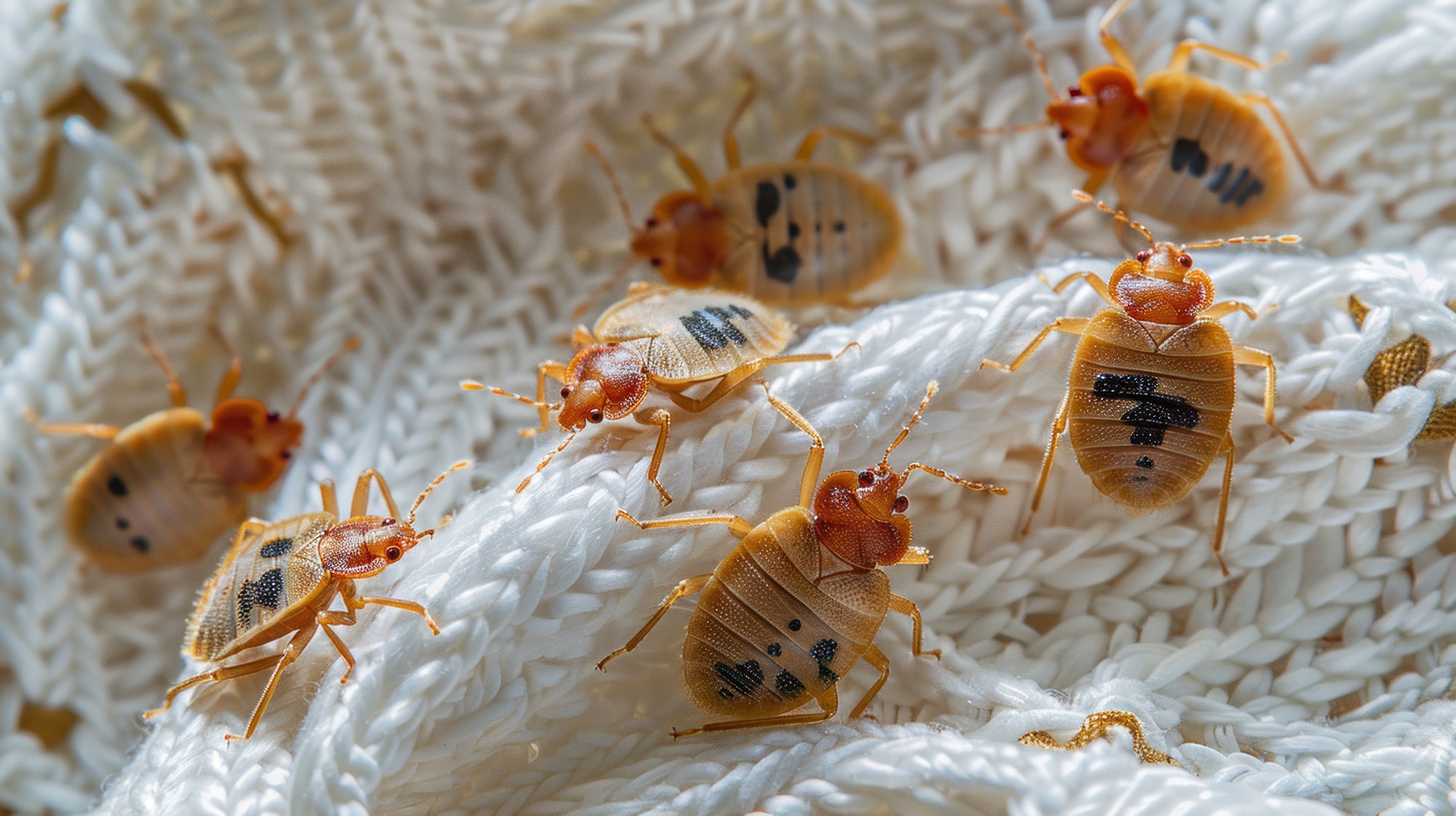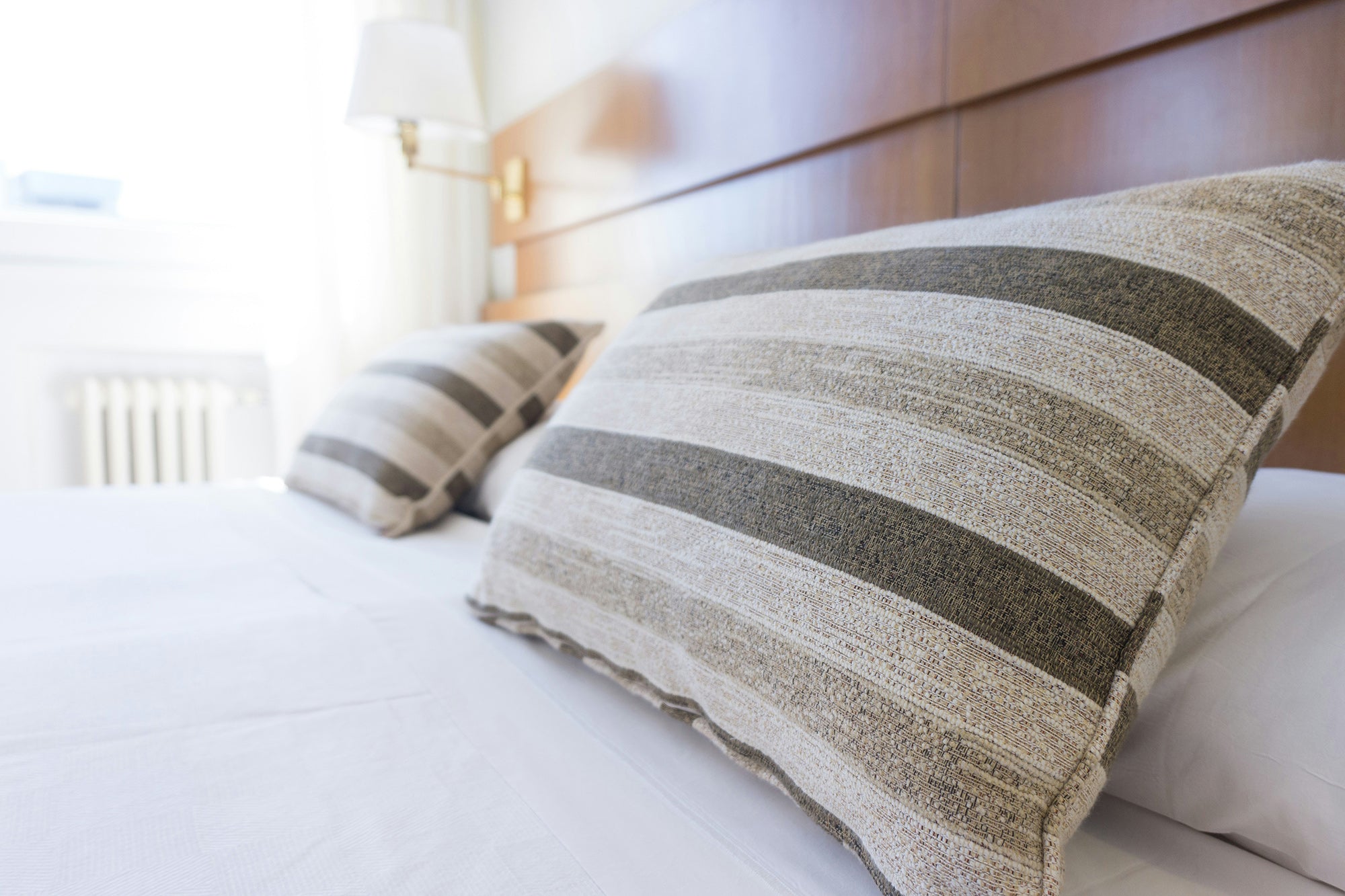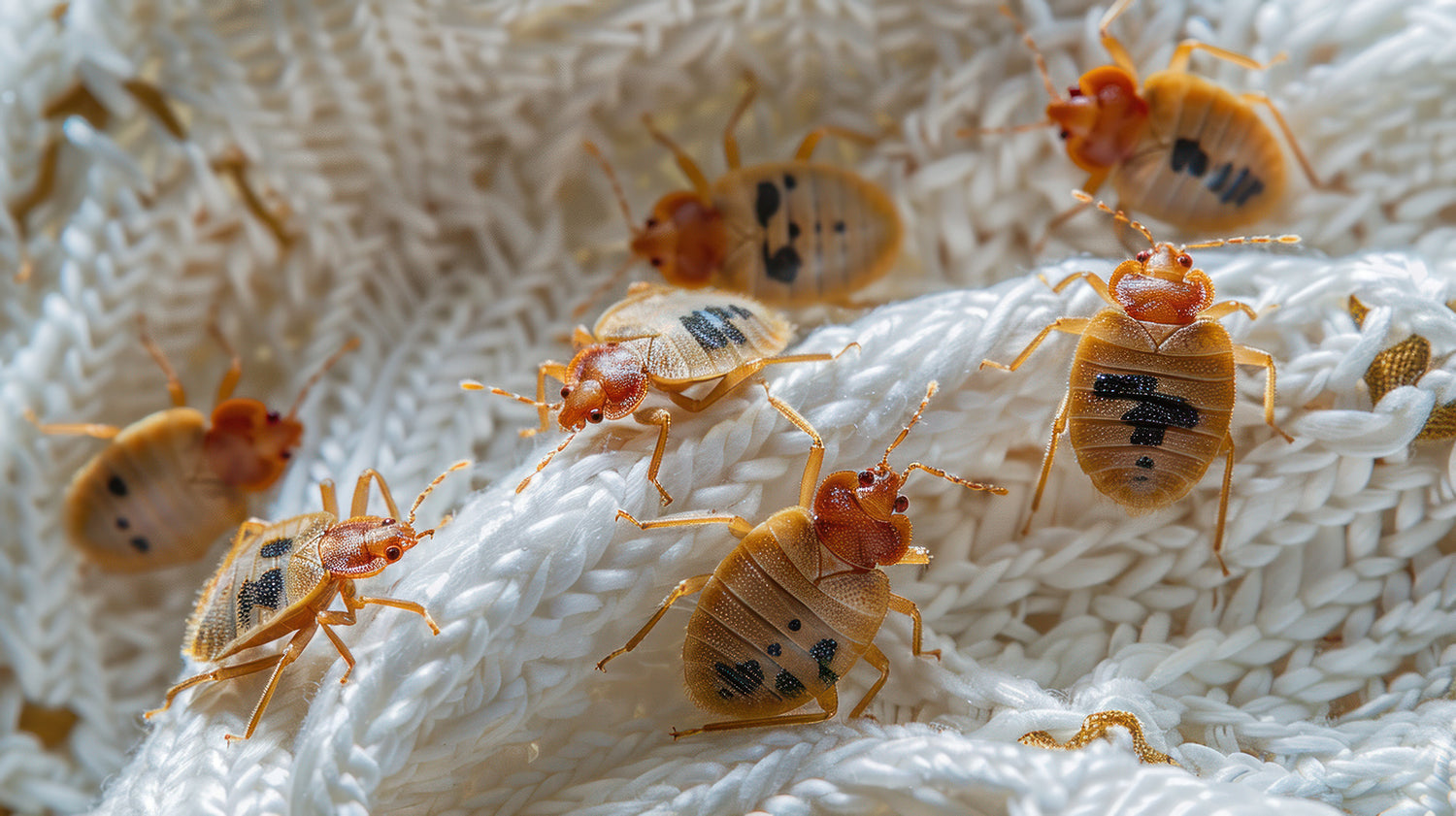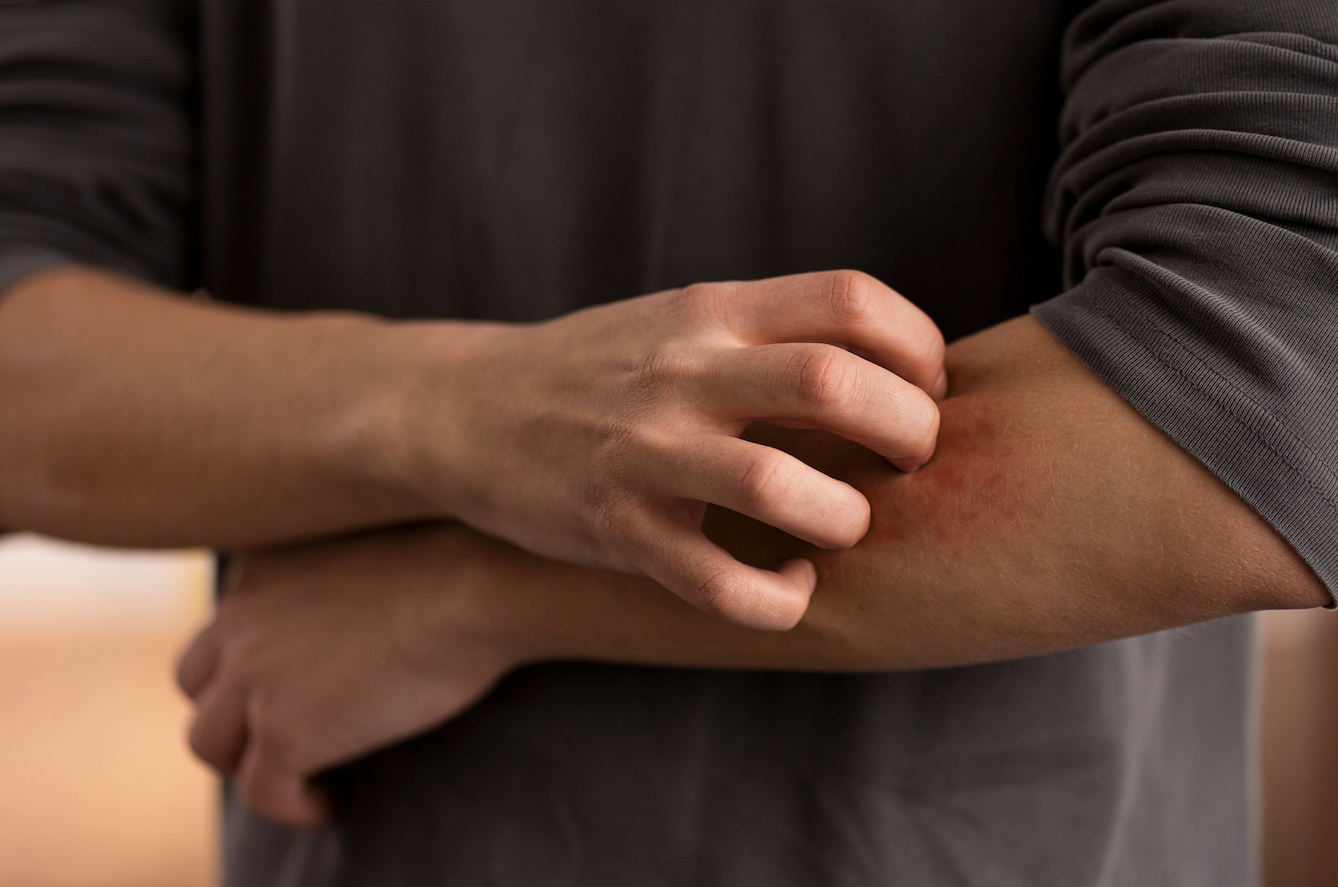Did you know that bed bugs are avid travelers? Yes, it’s true! They can hitch a ride on clothing, linens, canvas, luggage and other materials until they find their next home. Once they’ve set up camp (more on where below), they’ll scurry around when night falls, looking for animals (including humans!) for a good source of blood, their preferred meal.
These parasitic and positively vampiric critters are flat-bodied insects that range from 1 to 7 millimeters long, depending on their life cycle stage, and that can go months without a meal – like the cacti of the insect world. They can become quite a nuisance, as females often lay up to 50 eggs during their lifetimes, and specific treatments are required to get rid of them 1. Let’s talk about where you’re most likely to find these tiny, reddish-brown flightless bugs so you can keep your life bed bug-free!

Where Do Bed Bugs Hide?
The bad news is that the list of bed bug hot spots is pretty extensive. The good news? We have a few tried-and-true ways for you to avoid their unwelcome presence. It all starts with knowing where to keep an eye out for these small, irritating bugs.
Generally, bed bugs live across the globe – from North America to South America, Africa to Asia. A common misconception is that bed bugs live in unclean places, but they’re just as likely to be found in a five-star resort. Rest assured, if you find yourself in a bed bug bind, how often you do laundry, the detergent you use or the state of your mattress is unlikely to blame.
You can find bed bugs, well, anywhere there are beds 2. Since they like to have blood meals while people are asleep (typically between 1 and 5 a.m.), anywhere you lay your head is where they can be amassing for their next meal3.
The typical life cycle of a bed bug depends on the species and the temperature in the room, though at a steady 71.6°F, some bed bugs can live for up to four and a half months. 4
Bed bugs can infest any place people go, though locations that attract heavy traffic (such as hotels) or the homes of people who travel frequently may be at higher risk. In recent years, Chicago has topped the list of cities with documented bed bug infestations5. Now, let’s walk through some of the most common places where you might find bed bugs so you can be on the lookout!

Residential Settings
You might wonder, where do bed bugs hide? One of the most common places you might find bed bugs is inside people’s homes. Typically, they’ve traveled to your residence from somewhere else, like hitching a ride on your luggage after a recent trip.
Once inside a home, they like to cling to textured fabric, like that secondhand couch you found on Facebook Marketplace and bought for your living room. They’ll stake their claim in bedrooms, living rooms and areas where people like to congregate, like a den. Where people go, bed bugs go too; they prefer to be close to their meals.
Unsurprisingly, you might find bed bugs if you peek into the hidden spots within your home. For example, bed bugs gravitate toward the seams of mattresses, inside box springs and tucked within bedding. An upholstered headboard might be of special interest to them.
Bedrooms are one of their favorite hiding places since they have quick access to a food source at night, but you might also find them in your living room. They love cracks, crevices, folds and fabrics, including along curtains and in and around couches, armchairs, ottomans and more.
But you can find bed bugs on more than just your furniture. Remember, they had to find their way to your home in the first place. Bed bugs’ favorite modes of travel include luggage and clothing.
Before we move on to other places where you might find bed bugs outside your home, let’s talk about a few unsuspecting places where bed bugs like to gather. If you want to prevent bed bugs, it’s best to ditch the clutter; electronic devices, peeling wallpaper and piles of stuff are all bed bug hot spots.

The Hospitality Industry
As news articles frequently mention, bed bugs are rampant in hotels, motels and other overnight accommodations (bed-and-breakfasts, homestays like Airbnb, sleepaway camps, etc.), where they become “travel companions.” 6
Because these spaces attract people from all over the world, with hundreds or thousands of people moving in and out of rooms daily, bed bugs can spread like wildfire. That’s why it’s extra important to check your rooms before you unpack any of your belongings.

Public Transportation
Similarly, mass transportation can become a bed bug hub. Think of the number of people who use airplanes, buses, taxis, trains and ferries daily to get where they need to go. If one person has a few bed bugs attached to the seams of their luggage or swinging along on a pant leg, it’s easy to see how bed bugs can travel from somebody else’s home to yours.
Using public transportation does pose a risk of spreading an infestation. As we’ve mentioned, it pays to be aware and check any of your belongings that could have unwelcome visitors – luggage, clothing, electronics.

Healthcare Facilities
Another location where bed bugs thrive is in hospitals, clinics, nursing homes and surgery centers. Once again, these are institutions where hundreds or thousands of people are traveling to and from every day. Every person who enters these spaces – medical providers, facility staff, patients, family members, etc. – can bring bed bugs attached to their belongings.

Spray the Bed Bug Hot Spots Away
If leaving your home now seems overwhelmingly risky, fear not! While bed bugs are common (and certainly annoying), we have no evidence they spread diseases. However, they do bite, which can cause pain, itching, discomfort, blisters and, in some cases, infection. You can cure bed bug bites with over-the-counter options.
Otherwise, your best bet is to prevent them from taking hold in the first place. We prefer the natural route. Besides the health risks many insecticides pose7, there’s also evidence that bed bugs are developing resistance to commonly used chemicals like carbamate and pyrethroid.8
If you want to deal with this pest naturally, we have a few recommendations:
-
Scientists are increasingly exploring essential oils as an excellent alternative to more conventional bed bug treatments.9 Our favorite options include peppermint, lemongrass, clove, lavender, rosemary, eucalyptus and cedarwood.
-
Try our convenient Best Bee Brothers® Shake + Shield Bed Bug Repellent Room & Linen Spray whenever you travel. Simply shake the bottle and spray on linens, luggage and pillows. Let it dry, and reapply throughout your travels.
-
Always check your belongings after you travel for signs of bed bugs (eggs, reddish-brown stains/spots, etc.)
-
Clean up clutter around your home to eliminate desirable spots for these annoying bugs to hide.
If you have any additional questions about bed bug identification or prevention, check out the blog posts we linked above, or contact us!
- Stephen L. Doggett, Dominic E. Dwyer, Pablo F Peñas and Richard C Russell, “Bed Bugs: Clinical Relevance and Control Options,” Clinical Microbiology Reviews 25, no. 1 (January 2012): 164–192, https://doi.org/10.1128/cmr.05015-11.
- “Bed Bug FAQs,” Centers for Disease Control and Prevention, September 16, 2020, https://www.cdc.gov/parasites/bedbugs/faqs.html.
- Doggett et al., “Bed Bugs: Clinical Relevance and Control Options.”
- Doggett et al., “Bed Bugs: Clinical Relevance and Control Options.”
- Kiersten Riedford, “It’s Not Just Paris: Chicago Tops List among America’s Worst Cities for Bed Bugs,” NBC Chicago, January 22, 2024, https://www.nbcchicago.com/news/local/its-not-just-paris-chicago-tops-list-of-americas-worst-bed-bug-cities/3334611/.
- Nathan Solis, “Bedbugs Check In to Some Popular Las Vegas Hotels. Guests May Leave with New Travel Companions,” Los Angeles Times, February 20, 2024, https://www.latimes.com/california/story/2024-02-20/bedbugs-check-into-popular-las-vegas-hotels-guests-may-leave-with-new-travel-companions.
- Gerald F. O’Malley and Rika O’Malley, “Insecticide Poisoning,” Merck Manual: Consumer Version, February 16, 2024, https://www.merckmanuals.com/home/injuries-and-poisoning/poisoning/insecticide-poisoning.
- Doggett et al., “Bed Bugs: Clinical Relevance and Control Options.”
- María A. González-Morales, Martín Terán and Alvero Romero, “Behavioral Responses of the Common Bed Bug to Essential Oil Constituents,” Insects 12, no. 2 (February 2021): 184, https://doi.org/10.3390/insects12020184; and Doggett, et al., “Bed Bugs: Clinical Relevance and Control Options.”









Leave a comment
All comments are moderated before being published.
This site is protected by hCaptcha and the hCaptcha Privacy Policy and Terms of Service apply.